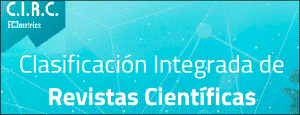Automatización inteligente en la gestión de la comunicación
DOI:
https://doi.org/10.31921/doxacom.n29a9Palabras clave:
Comunicación, automatización, industria 4.0, inteligencia artificial, procesos de comunicaciónResumen
Las nuevas tecnologías han permitido el desarrollo de la industria, transformándola así desde la 1.0 hasta la actual, denominada industria 4.0, que avizora un rápido crecimiento por la penetración de la inteligencia artificial y sus diversas tecnologías que prometen sorprendernos a todos e invadir el mercado y transformar el mundo. Muchas de estas tecnologías, van de la mano de la automatización inteligente que proyecta una transformación a gran escala. Frente a esta metamorfosis, en el presente artículo se profundiza sobre la automatización inteligente y de manera especial en la gestión de la comunicación de las organizaciones, repasando la bibliografía existente y profundizando sobre ella. Como conclusión se propone un estado de la cuestión mucho más clarificado y un aporte a la escasa bibliografía referente a la temática de estudio que pueden servir de conector entre las citadas teorías y una proyección de la automatización en el campo de la comunicación.
Descargas
Citas
Acemoglu, D., & Restrepo, P. (2019, March). The revolution need not be automated. Retrieved April 17, 2019, from https://www.project-syndicate.org/commentary/ai-automation-labor-productivity-by-daron-acemoglu-and-pascual-restrepo-2019-03
Adecco (2016). Report on the future of work in Spain. Madrid. Retrieved from https://adecco.es/wp-content/uploads/notas-de-prensa/737.pdf
Adecco (2018). Adecco infoempleo report. Madrid. Retrieved from https://adecco.es/wp-content/uploads/2018/10/Infoempleo-2017-web-ok.pdf
Akkizidis, I., & Stagars, M. (2015). Marketplace lending, Financial Analysis, and the Future of credit: Integration, Profitability, and risk management. United States: John Wiley & Sons.
Alcaraz, M. (2014). Internet of things. Catholic University "Nuestra Señora de la Asunción", 1–27.
Spanish Association of the Digital Economy. (2012). White paper of electronic commerce. Practical Guide for Pymes (2nd ed.). Spain: Herrera Consultants.
Author, D. H. (2015). Why Are There Still So Many Jobs? The History and Future of Workplace Automation. Journal of Economic Perspectives, 29 (3), 3–30. https://doi.org/10.1257/jep.29.3.3
Baldi, V. (2017). Beyond the algorithmic and automated society. For a critical reappropriation of the digital culture. Observatory (OBS *), 11 (3), 186-198. https://doi.org/10.15847/obsOBS11320171093
Barber, E., Tripaldi, N., Pisano, S., D´Alessandro, S., Romagnoli, S., Parsiale, V., ... Gregui, C. (2004). The automation and services of public access libraries in the autonomous city of Buenos Aires and its surroundings within the framework of the information society. Information, Culture and Society, (11), 9–56. Retrieved from http://ieeexplore.ieee.org/stamp/stamp.jsp?tp=&arnumber=7389157&isnumber=7389012
Boyd, D., & Crawford, K. (2012). Critical questions for big data: Provocations for a cultural, technological, and scholarly phenomenon. Information Communication and Society, 15 (5), 662–679. https://doi.org/10.1080/1369118X.2012.678878
Bravo, E., Santana, M., & Rodón, J. (2014). Impact of automation on performance. Evaluation in information systems. Venezuelan Management Magazine, 19 (66), 267-286. https://doi.org/10.1017/CBO9781107415324.004
Bucklin, R. E., Lehmann, D. R., & Little, J. D. C. (1998). From decision support to decision automation: A 2020 vision. Marketing Letters, 9 (3), 235–246. https://doi.org/10.1023/A:1008047504898
Cabero Almenara, J. (1994). New technologies, communication and education. Comunicar: Iberoamerican Scientific Journal of Communication and Education., 3, 14–25.
Capek, K. (1920). Rossum´s Universal Robots. U.S. Retrieved from http://www.gutenberg.org/files/59112/59112-h/59112-h.htm
Carl-Gustav, L. (2017). Decades of Automation in the Newsroom. Digital Journalism, 5 (2), 123-140. https://doi.org/10.1080/21670811.2016.1160791
Carreira, K., & Squirra, S. (2017). Automated News Geração De Linguagem Natural E a Logic Do Bom Sufficient. Observatory Magazine, 3 (3), 60–84.
Colby, K. M. (1999). Comments on Human-Computer Conversation. In Machine conversations (pp. 5–8). Boston: Springer.
Cuadras, Á. (2009). Political communication in the digital age. About the irruption of Barack Obama. Communication: Venezuelan Studies of Communication, (145), 22–32.
Davis, F. (1986). A technology acceptance model for empirically testing new end-user information systems: Theory and results. Unpublished Doctoral dissertation, MIT Sloan School of Management, Cambridge, M.A. Massachusetts Institute of Technology, Cam bridge, US. https://doi.org/oclc/56932490
st-century newspaper. (2018). Process automation: key in the transformation of the Human Resources department. Retrieved November 14, 2018, from http://www.diariosigloxxi.com/texto-diario/mostrar/1190321/automatizacion-procesos-clave-transformacion-departamento-recursos-humanos
Evans, D. (2011). Internet of things. How the next evolution of Internet changes everything. Cisco Internet Bussiness Solutions Group-IBSG.
Fernández-Torres, Y., Gutiérrez-Fernández, M., & Palomo-Zurdo, R. (2019). How does cooperative banking perceive the impact of digital transformation? CIRIEC-Spain, Journal of Public, Social and Cooperative Economy, (95), 11–38. https://doi.org/10.7203/ciriec-e.95.12724
Frey, C. B., & Osborne, M. A. (2017). The ruture of employment: how susceptible are jobs to computerisation? Technological Forecasting and Social Change, 114, 254–280.
García-Orosa, E., & Campos-Domínguez, B. (2018). Algorithmic communication and political parties : Automation of production and flow of messages. El Profesional de La Información, 27(4), 769–777.
Gartner. (2011). Customer 360 Summit 2011. 2011. Retrieved from https://www.gartner.com/imagesrv/summits/docs/na/customer- 360/C360_2011_brochure_FINAL.pdf
Gartner, I. (2019). Gartner Predicts 25 Percent of Digital Workers Will Use Virtual Employee Assistants Daily by 2021. Retrieved May 16, 2019, from https://www.gartner.com/en/newsroom/press-releases/2019-01-09-gartner-predicts-25-percent-of-digital-workers-will-u
González-Filgueira, G., & Rodríguez, F. (2018). Automation of an industrial power plant through distributed control. Iberian Journal of Information Systems and Technologies, (27), 1–17. https://doi.org/10.17013/risti.27.1
Hammond, K. J. (2013). The Value of Big Data Isn’t the Data. Harvard Business Review. Retrieved from https://hbr.org/2013/05/the-value-of-big-data-isnt-the
Heimbach, I., Kostyra, D. S., & Hinz, O. (2015). Marketing Automation. Business and Information Systems Engineering, 57(2), 129–133. https://doi.org/10.1007/s12599-015-0370-8
Hernando Gómez, Á., & Paramio Pérez, G. (2019). Interpersonal and hyperpersonal dimensions of digital communication: identities, social influence and collective action. In D. Romero-Rodríguez, Luis M. and Rivera-Rogel (Ed.), Communication on the digital stage. News, challenges and prospects (first, p. 154). Peru: Peru.
Herrero-Diz, P., & Varona-Aramburu, D. (2018). The use of chatbots for information automation in Spanish media. The Professional of the Information, 27(4), 742–749. https://doi.org/10.3145/epi.2018.jul.03
Hualde, A. (2015). The end of work again? The new wave of automotive and its consequences. Comesco, 1–11
Kitchenham, B. (2004). Procedures for performing systematic reviews. Keele, UK, Keele University, 33, 1–26. Retrieved from http://tests-zingarelli.googlecode.com/svn-history/r336/trunk/2-Disciplinas/MetodPesquisa/kitchenham_2004.pdf
Letheren, K., & Charmaine, G. (2017). Embracing the bots: how direct to consumer advertising is about to change forever. Retrieved May 29, 2019, from https://theconversation.com/embracing-the-bots-how-directto-%0Aconsumer-advertising-is-about-to-change-forever-70592
Little, J. D. . (2001). Marketing automation on the internet. In 5th Invitational Choice Symposium (pp. 1–8). Asiloma.
M Túñez-Lopez, C Toural-Bran, C Valdiviezo-Abad (2019): “Automation, bots and algorithms in news writing. Impact and quality of artificial journalism ”. Latin Journal of Social Communication, 74, pp. 1411 to 1433.
http://www.revistalatinacs.org/074paper/1391/74es.html
DOI: 10.4185/RLCS-2019-1391
Macau, R. (2004). TIC: For what? (Functions of information and communication technologies in organizations). Journal of University and Knowledge Society, 1(1), 1–12.
Mark, P. (2019, May). Industrial automation awaits 5G. 10-05-2019, 58–62. Retrieved from http://www.automaticaeinstrumentacion.com/es/revistas.php
McKinsey Global Institute. (2017). A Future that Works: Automation, Employment and Productivity. Retrieved from www.mckinsey.com/mgi.
Míguez, P. (2008). Recent transformations of work processes: from automation to the information revolution. Work and Society. Inquiries on Employment, Culture and Political Practices in Segmented Societies, X(11), 1–20.
Moreno, Á., Athaydes, A., & Navarro, C. (2018). Use of big data and automation among public relations professionals in Brazil. ComHumanitas. Scientific Journal of Communication, 9(2), 85–100.
Moreno, Á., Molleda, JC, Athaydes, A., Suárez, AM, Herrera, M., & Álvarez, A. (2017). Latin American Communication Monitor 2016-2017. Trends in strategic communication: big data, automation, engagement, influencers, coaching and skills. Results of a survey in 17 countries. Madrid Spain.
Navío-Navarro, M., & Puebla-Martínez, B. (2019). Lead generation: from SEO to CRM. Brief introduction to the organizational exhibition in the digital ecosystem. In LM
Romero-Rodríguez & D. Rivera-Rogel (Eds.), Communication on the digital stage. News, challenges and prospects (first, pp. 505-533). Peru. Business and Companies. (2019). Relevance and technology, keys to personalize the customer experience. Retrieved May 30, 2019, from https://www.puromarketing.com/14/32167/relevancia-tecnologia-claves-para-personalizacion-experiencia-cliente.html
Newman, N. (2017). Journalism, media, and technology trends and predictions 2017. Retrieved from https://ora.ox.ac.uk/objects/uuid:c46faa43-eed0-4708-b607-fb5d3a12a70f/download_file?file_format=pdf&safe_filename=Journalism%252C%2BMedia%2Band%2BTchnology%redBBchnology 2B2017.pdf & type_of_work = Report
Ortega Mohedano, F., & Coronel-Salas, G. (2019). Big data, augmented data and cognitive computing in the millennial era. In LM Romero-Rodríguez & D. Rivera-
Rogel (Eds.), Communication on the digital stage. News, challenges and prospects (first, pp. 821–853). Peru: Pearson.
Ortiz Gonzales, J. (2010). The role of the communicator in the digital age. Interuniversity Teacher Training Magazine, (33), 73–85.
Oxford English Dictionary. (1860). Oxford English Dictionary. Retrieved May 18, 2019, from https://www.oed.com/view/Entry/13468?redirectedFrom=automation#eid
Parasuraman, R., & Riley, V. (1997). Human Factors: The Journal of the Human Factors and Ergonomics Society, (39), 230–253. https://doi.org/10.1518/001872097778543886
Parasuraman, R., Sheridan, TB, & Wickens, CD (2000). A model for types and levels of human interaction with automation. IEEE Transactions on Systems, Man, and Cybernetics - Part A: Systems and Humans, 30(3), 286-297.
Parra, S. (2014). The first automata in history. Retrieved December 10, 2018, from https://www.xatakaciencia.com/robotica/los-primeros-automatas-de-la-historia
Perlado, M. (2013). New opportunities in digital communication: new profiles and skills. Prospects and Trends for Communication in the 21st Century, 429-440.
Ponsa, P., & Ramon, A. (2005). Process automation through the GEMMA guide. Polytechnic University of Catalonia. Retrieved from https://books.google.es/books?hl=en&lr=&id=oAVqBQAAQBAJ&oi=fnd&pg=PA11&dq=automatización+de+procesos+internos&ots=srxdkR-sGL&sig=IjKE78j0ftazLfvpomnq internalization process Briefcase. (2019). What human resource to use in digital transformation. Retrieved May 22, 2019, from https://www.portafolio.co/tendencia/que-recurso-humano-utilizar-en-la-transformacion-digital-529681
Rebollo Gómez, F., & Rebollo de Garay, G. (2019). Digital transformation, the enemy of productivity? Retrieved May 22, 2019, from http://www.interempresas.net/MetalMecanica/Articulos/245853-Transformacion-digital-la-enemiga-de-la-produividad.html
Restrepo, M. (1995). Communication for organizational dynamics. Presentations and Summaries, 14(26), 91–96. Retrieved from http://www.javeriana.edu.co/signoyp/pdf/0905.pdf
Rodríguez Gutiérrez, JM (1999). Automation. Education and Library, 11(100), 75–76. Retrieved from http://hdl.handle.net/10366/115404
Rodríguez, P. (2018). Algorithmic Governance Barda Magazine, (6), 14–35.
Rodríguez Werner, P. (2019). Why do digital transformation processes fail? Retrieved May 30, 2019, from http://laestrella.com.pa/opinion/columnistas/fracasan-procesos-transformacion-digital/24123183
Russell, S., & Norvig, P. (2008). Artificial Intelligence A Modern Approach. Madrid - Spain: Pearson Prentice Hall.
Salazar, I. (2018). Robots and Artificial Intelligence. New challenges of journalism. Doxa Communication. Interdisciplinary Journal of Communication Studies and Social Sciences, (27), 295-315. https://doi.org/10.31921/doxacom.n27a15
Sánchez Gonzales, H., & Sánchez González, M. (2017). Bots as a news service and its emotional connectivity with the audience. The case of Politibot. Doxa Communication, 25, 63–84.
Schwab, K. (2016). The fourth industrial revolution. Debate.
Shawar, A. B., & Atwell, E. (2007). Chatbots: are they useful? LDV Forum, 22 (1), 29–49. Retrieved from https://jlcl.org/content/2-allissues/20-Heft1-2007/Bayan_Abu-
Shawar_and_Eric_Atwell.pdf% 0Ahttp: //www.academia.edu/download/35586041/Bayan_Abu-Shawar_and_Eric_Atwell.pdf
Stiegler, B. (2014). Ars and organizational inventions in hyper control societies. Journal of Philosophy, year XXII (28), 147-163.
Technology Vision, & Accenture Research. (2019). The post-digital era is near. Are you ready for what's next?
Tunal, G. (2005). Work Process Automation. Scientific Magazine Network of Latin America and the Caribbean, Spain, and Portugal, 8 (10), 95–104.
Túñez-López, J.-M., Toural-Bran, C., & Cacheiro-Requeijo, S. (2018). Automated-content generation using news-writing bots and algorithms: Perceptions and attitudes among Spain’s journalists. The Information Professional, 27 (4), 750–758. https://doi.org/10.3145/epi.2018.jul.04
Túñez López, J. M., & Toural-Bran, C. (2018). Artificial Intelligence in communication management: impact of robotization in the elaboration of informative content In Communication and music: messages, manifestations, and business. Latin Communication Congress of 2018 (pp. 1884–1896). La Laguna-Spain: University of La Laguna. https://doi.org/10.4185/cac155
Urteaga, E. (2017). Review: La société hyper-industrielle by Pierre Veltz. Economics Essays, 27 (51), 179–188. https://doi.org/10.15446/ede.v27n51.69918
Descargas
Publicado
Cómo citar
Número
Sección
Licencia
Derechos de autor 2019 http://creativecommons.org/licenses/by-nc/4.0

Esta obra está bajo una licencia internacional Creative Commons Atribución-NoComercial 4.0.



























